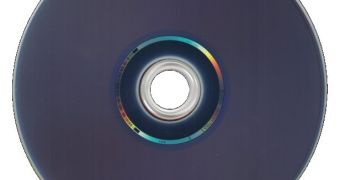A little over a week ago, we learned about a nanotechnology-based technique that could lead to the creation of DVDs with 4TB capacities, but it was implied that years would pass before practical applications emerged.
A new startup company, created by a Case Western Reserve University physics professor and his graduate student, might have discovered a method that will produce high-capacity optical disks sooner than that.
Called Folio Photonics, the upstart company proposes a scribing method that can cram 1 TB or 2 TB of data on a single disk.
It starts with taking a thick flow of polymers similar to Putty, then dividing and stacking it repeatedly, and then spreading it into a film. The film is rolled onto a spool.
After that, it is a simple matter of cutting and pasting film onto the same hard plastic base that DVDs and Blu-ray disks are designed with.
“A disc will be on the capacity scale of magnetic tapes used for archival data storage. But, they will be substantially cheaper and have one advantage: you can access data faster,” said Kenneth Singer, the Ambrose Swasey professor of physics, and co-founder of Folio Photonics.
“You just pop the disc in your computer and you can find the data in seconds. Tapes can take minutes to wind through to locate particular data.”
Folio Photonics will be based in the Cleveland area and intends to sell its optical disks as an alternative to magnetic drives (hard disk drives) and magnetic tapes that corporations use for long-term backup purposes.
The equivalent of 50 Blu-ray disks can be loaded on a single disk by writing data in dozens of layers, not two or four (the optical film can have 64 layers).
Finally, the company promises that it only needs to make some small adjustments to a normal disk reader to enable it to read the data on each layer (without interference from the layers above and below).
Kenneth Singer and his partner Mr. Valle hope to have prototype discs and readers to show within a year.

 14 DAY TRIAL //
14 DAY TRIAL //